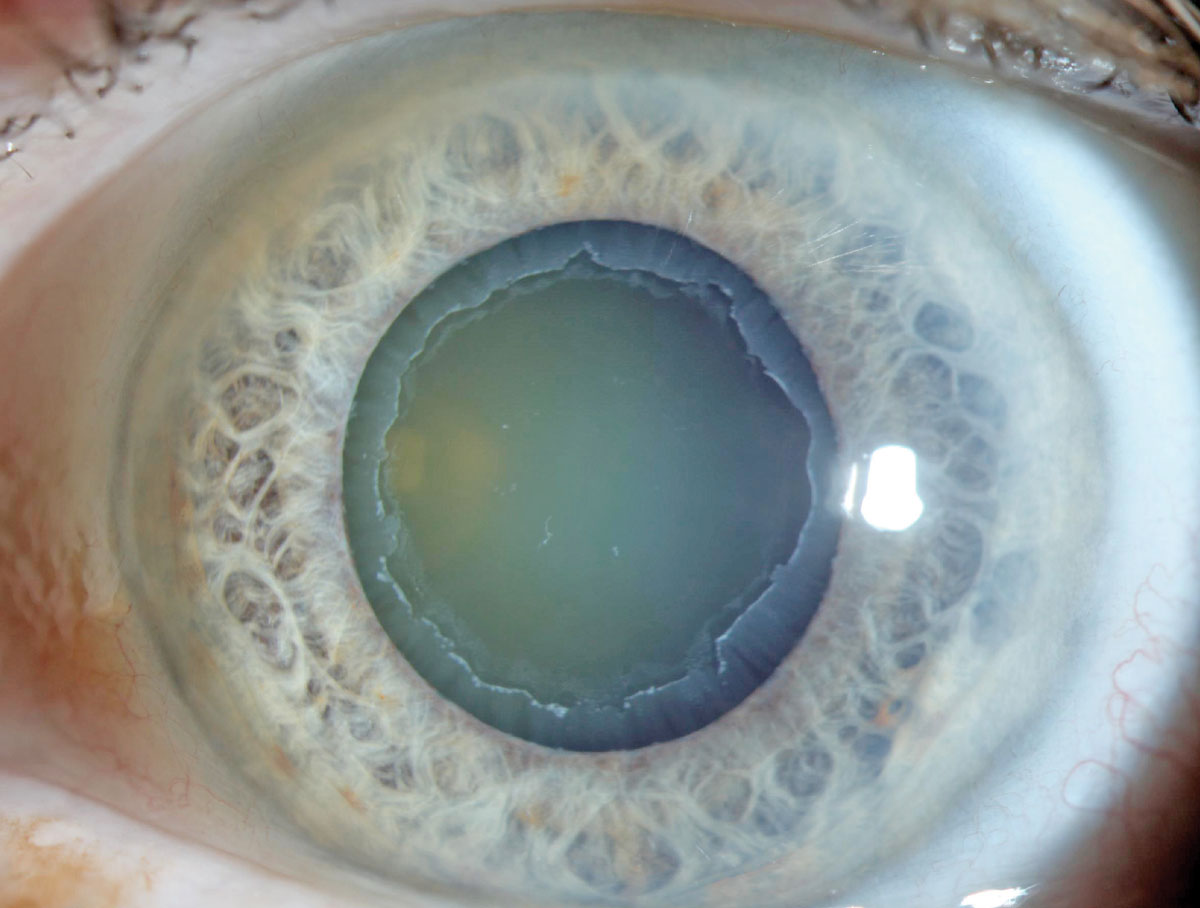 |
|
Patients with exudative AMD at the time of exfoliation syndrome diagnosis were most likely to convert to exfoliative glaucoma within three years in this population-based study. Photo: Aaron Bronner, OD. Click image to enlarge. |
It’s fairly common for patients with exfoliation syndrome (XFS) to progress to exfoliative glaucoma (XFG) in the few years following their diagnosis. Given the significant risk of vision loss associated with this aggressive form of open-angle glaucoma, clinicians must be able to recognize patients with a greater risk of conversion and adjust monitoring protocols appropriately. To help identify these individuals, a new study in Ophthalmology Glaucoma reported on several clinical factors that appeared to predict conversion to XFG within three years following an XFS diagnosis.
The retrospective cohort study retrieved data from the Utah Population Database to track 487 patients with XFS (all >50 years old). The researchers used several statistical models to discern which variables could predict conversion to XFG.
Over three years, one-third of eyes converted from XFS to XFG (34%). By year five, this percentage jumped to 56.3% among patients not lost to follow-up. On average, there were 42 months between XFS diagnosis and XFG progression.
A total of 18 variables were identified that cumulatively predicted the conversion to XFG within three years with 71% precision. Patients with exudative age-related macular degeneration (AMD) had the highest odds of conversion, while several other predictive variables included nonexudative AMD, primary open-angle glaucoma, obstructive sleep apnea, atrial fibrillation and ocular hypertension (diagnosed prior to XFS onset). Cataract surgery, statin use, higher baseline IOP (18.0 vs 16.0mm Hg) and greater cup-to-disc ratio (>0.7) were also shown to increase the risk of conversion to XFG over three years.
The researchers explained in their paper that the strong association between exudative AMD and XFG conversion could be at least partially due to repeated intravitreal injections and their induced changes in the trabecular meshwork. They noted that during the three-year follow-up period, “the median number of injections in patients with known exudative AMD at XFS onset was 12 (range: three to 34) in 31 eyes that progressed to XFG and five (range: one to 30) in 20 eyes that did not progress.” However, they pointed out that “non-exudative AMD also predicts XFG conversion, and we cannot rule out a shared intrinsic disease etiology.”
In conclusion, the study authors wrote, “We have determined a set of identifiable historic and observable factors that predicted which newly diagnosed XFS patients progressed to XFG within three years. A validation will independently confirm if a set of prognostic indicators holds promise in other clinical settings.”
| Click here for journal source. |
Curtin K, Stein JD, Stagg BC, et al. Identifiable historic and observable factors may predict progression to exfoliation glaucoma in newly diagnosed exfoliation patients. Ophthalmol Glaucoma. October 21, 2024. [Epub ahead of print]. |

